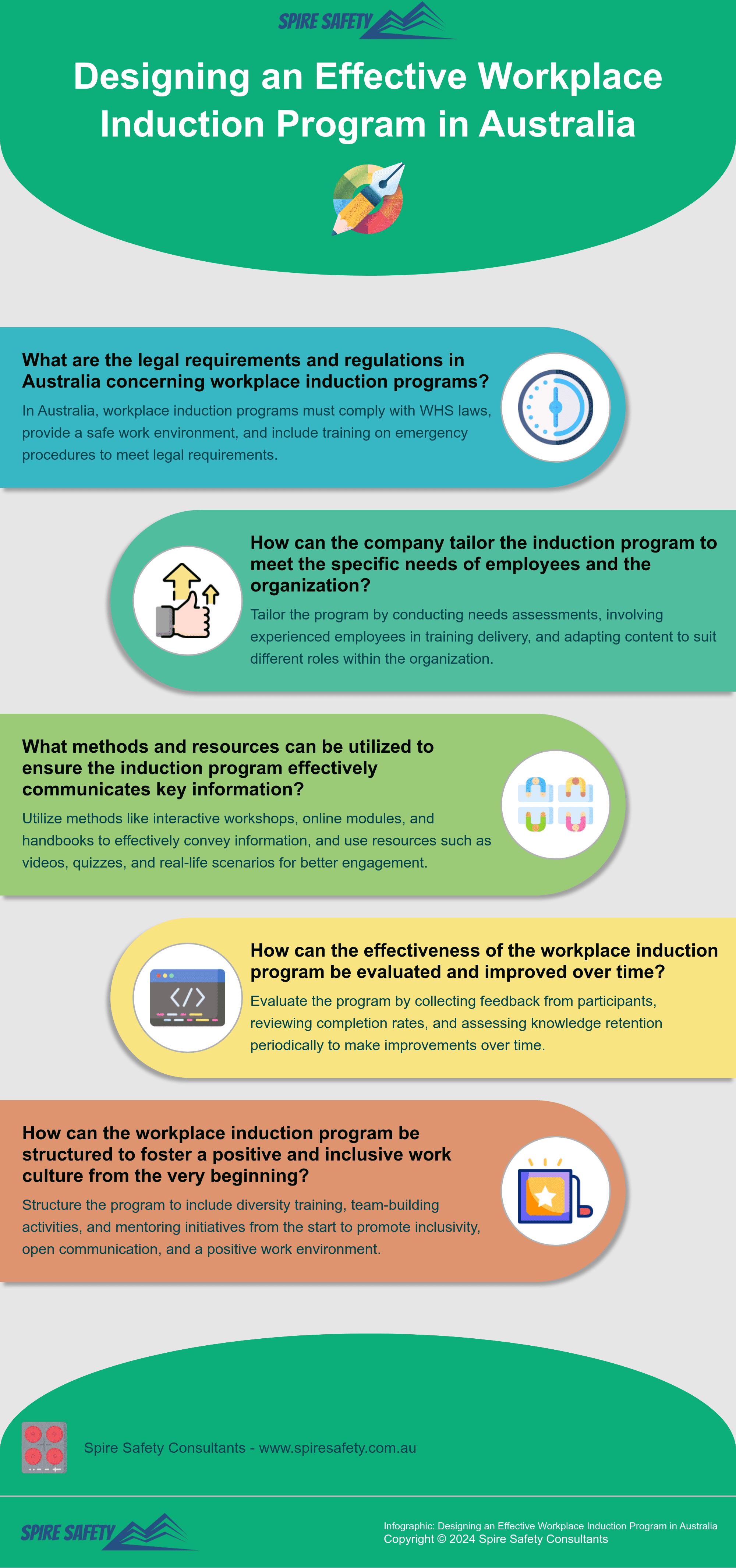Employee onboarding is a crucial process for any organization, as it sets the tone for a new employee’s experience and can significantly impact their engagement and productivity.
In Australia, workplace induction programs play a vital role in introducing new employees to their roles, the organization, and its culture. In this article, we will explore the key elements of designing an effective workplace induction program in Australia.
Understanding the Importance of Workplace Induction
A well-designed workplace induction program is essential for several reasons. Firstly, it helps new employees feel welcomed and valued, which can lead to higher job satisfaction and retention rates.
Additionally, it provides employees with the information and tools they need to perform their roles effectively, reducing the likelihood of errors and accidents.

In Australia, workplace induction programs are governed by various laws and regulations, including the Fair Work Act and WHS (Work Health and Safety) Regulations.
These regulations require employers to provide new employees with information about their rights and responsibilities, as well as any health and safety procedures relevant to their role.
Key Components of an Effective Workplace Induction Program
An effective workplace induction program should be tailored to the role and organization.
It should include an introduction to the company’s culture and values, health and safety procedures, an overview of job responsibilities, training and development opportunities, communication channels, and feedback mechanisms.
Steps to Develop an Induction Program
Developing an effective workplace induction program involves several key steps. Firstly, conducting a training needs analysis can help identify the specific knowledge and skills new employees need.
Next, designing induction materials that are engaging and informative is crucial. Implementing the program involves delivering the induction materials to new employees and providing them with the support they need to complete the program.
Finally, evaluating the program and making any necessary improvements is essential for ensuring its effectiveness.
Challenges and Solutions
Developing an effective workplace induction program can be challenging, particularly for organizations with limited time and resources. However, there are several solutions to these challenges. Ensuring engagement and participation can be achieved through interactive and engaging induction materials.
Overcoming time and resource constraints may involve leveraging technology to deliver virtual inductions.
Addressing language and cultural differences can be achieved through providing translated materials and cultural sensitivity training.
Case Studies: Successful Induction Programs
Company X is a leading example of a successful workplace induction program. They focus on mentorship, pairing new employees with experienced staff members who can provide guidance and support.
Company Y uses technology to deliver a virtual induction program, allowing new employees to complete their induction at their own pace, from anywhere in the world.
Designing an effective workplace induction program in Australia is essential for ensuring that new employees are welcomed, informed, and prepared to perform their roles effectively.
By following the key components outlined in this article, organizations can create a positive onboarding experience that sets the stage for long-term success.
FAQs
- What is the purpose of a workplace induction program?
- A workplace induction program is designed to introduce new employees to their roles, the organization, and its culture.
- What are the legal requirements for workplace induction in Australia?
- In Australia, workplace induction programs are governed by various laws and regulations, including the Fair Work Act and WHS Regulations.
- How can organizations overcome time and resource constraints when developing an induction program?
- Organizations can overcome time and resource constraints by leveraging technology to deliver virtual inductions and by focusing on the most critical information.
- What role does feedback play in an effective workplace induction program?
- Feedback is essential for evaluating the effectiveness of the induction program and making any necessary improvements.
- How can organizations ensure that their induction program is engaging and informative?
- Organizations can ensure that their induction program is engaging and informative by using interactive materials, incorporating real-life examples, and providing opportunities for new employees to ask questions.
Advice & Actionable Tips
- Conduct a Needs Assessment: Before designing your induction program, assess the specific needs and requirements of your organization and new employees. This will help tailor the program to address key areas effectively.
- Create Clear Objectives: Define the objectives of your induction program, ensuring they align with your organization’s goals and values. Clear objectives will guide the content and delivery of the program.
- Utilize Multiple Training Methods: Incorporate a variety of training methods, such as online modules, on-site training, and practical demonstrations, to cater to different learning styles and ensure maximum engagement.
- Focus on Engagement: Design your induction program to be engaging and interactive. Include quizzes, group activities, and real-life scenarios to keep participants actively involved.
- Provide Ongoing Support: Offer ongoing support and mentorship to new employees beyond the induction period. This will help them integrate into the organization more smoothly and feel supported in their new role.
🌐 Article Sources & Resources
- Spire Safety Consultants – Designing Effective Training Safety Programs in Australia: This resource provides guidance on designing effective workplace health and safety (WHS) training programs in Australia, which can be adapted for designing induction programs.
- Business Queensland – Staff Onboarding and Inductions: This resource offers information and advice on effective workplace induction programs in Australia. It outlines key steps in an employee onboarding process and induction, providing practical tips and resources.








